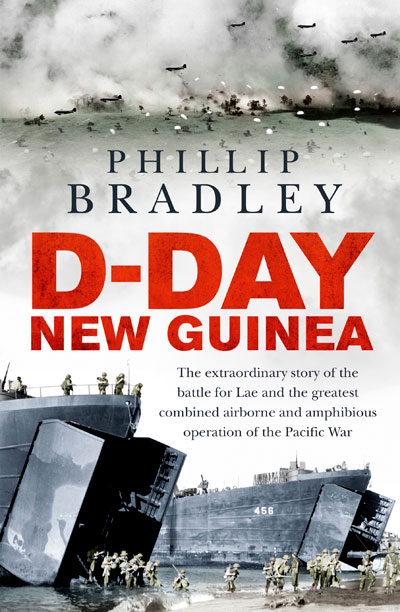“Java is heaven, Burma is hell, but you never come back alive from New Guinea” – Japanese military saying…
This book covers a little known and possibly not well documented portion of the Papua-New Guinea campaigns of World War II. While the desperate battles for Papua and the Kokoda Track are well documented, and MacArthur’s focus on getting to the Philippines as fast as, and by any means possible is well known, the (primarily) Australian led capture of Lae in New Guinea is not so well documented and perhaps under-rated – along with the privations the Japanese troops suffered in their eventual retreats over the mountains that equal (and perhaps exceed) those of the Kokoda campaign.
The book touts the campaign as a rehearsal for the D-Day invasion of France due to the amphibious landing combined with the first successful large-scale Allied airborne operation of world war II. However I think this does somewhat overstate things given operation Torch had preceded it and Husky occurred about the same time, and airborne operations were included in these albeit not going very smoothly. Husky (Sicily) also, if my memory serves me, was physically the largest Allied invasion of the entire war, much larger than Overlord (Normandy, the “D-Day” everyone knows) so the claims regarding size are perhaps misleading. However that is nto to take away from the success of these operations, and the fact that the airborne deployment of U.S. Paratroop Regiment was highly successful and set the scene for the scope of future operations.
The book itself is highly readable and covers the subject well, and where needed provides greater detail. While it does not provide detailed blow by blow information on all actions it provides plenty of information about the most interesting or unusual actions, and adequately gives the reader an understanding of the environment and the porous nature of the battle lines for example. Phillip Bradley provides many extraordinary stories from the Australian, American and Japanese and their fight against the jungle, wild rivers, mountains, mud, and supply challenges that made all of Papua-New Guinea a nightmare to fight in.
The book also highlights the lack of dynamism and initiative that often hampered the Australian & American efforts, and the consequent missed opportunities (both to shorten the campaign and capture large numbers of Japanese troops who were then able to escape via arguably impassable routes). The Japanese displayed great energy, despite privations and major shortages of supplies, and it would only be some time well after the Lae campaign the Australian and American commands started to realise and demonstrate similar urgency in their actions.

I found this a great book, and a really good introduction to the less well known actions on the North-East corner of Papua-New Guinea, with about the first third covering the initial Japanese invasion and occupation (about 10-11 months from March/April 1942 through to early 1943), then the balance of the book covering the actual Australian-led offensive(s) and invasion, and the ultimate Japanese retreat. Alongside books on the better known Kokoda Track and Papuan fighting this greatly rounds out my knowledge of the fighting in PNG, and provides many great ideas for wargaming scenarios from patrols up to battalion sized actions (ideal for Crossfire games).
For more Pacific, New Guinea & Far East World War 2 campaign reading see also my Pacific Theatre Reading List post (from when New Zealand’s April 2020 COVID-19 Lockdown left me with plenty of time to read) and my recent USS Hornet: Mutiny & Mayhem at Midway post (which has excellent Midway Campaign book recommendations and a great video on the truth about what happened with Hornet’s air group at Midway).

2 thoughts on “D-Day New Guinea”